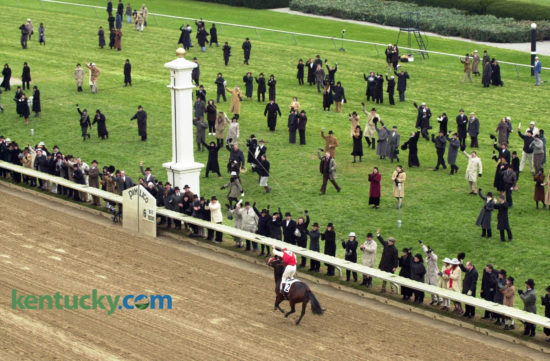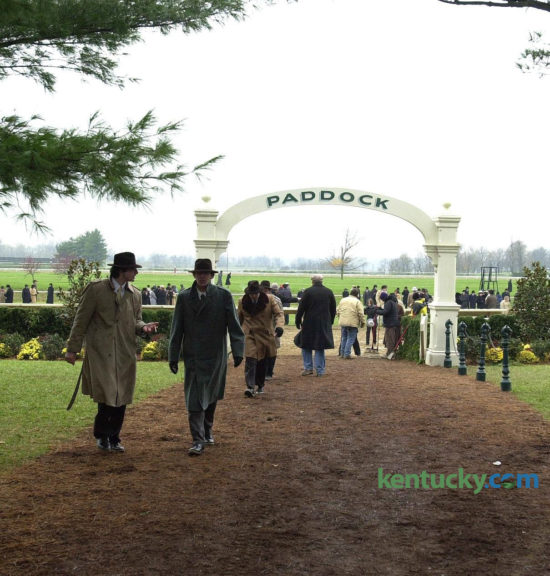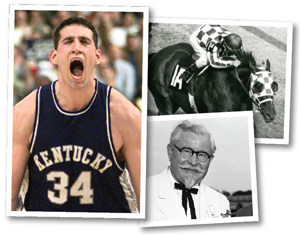October 8, 2025
‘Seabiscuit’ filming, 2002
Posted on November 17, 2017 | in Uncategorized | by MCC Servers
Jockey Gary Stevens, played jockey George Woolf in the movie “Seabiscuit.” In this scene, shot Nov. 17, 2002, the last day of filming at Keeneland, Woolf and Seabiscuit return after winning a match race between underdog Seabiscuit and Triple Crown winner War Admiral. More than 4,200 people turned out in the cold to be unpaid extras in one of the movie’s climactic scenes, a match race between underdog Seabiscuit and Triple Crown winner War Admiral, ridden by Chris McCarron during filming. The real real race was at Maryland’s Pimlico Race Course on Nov. 1, 1938. To portray it, Keeneland was redone to look like Pimlico, complete with the Maryland flag snapping over the old-fashioned tote board. “Seabiscuit,” produced by Universal Studios and based on the book by Laura Hillenbrand, starred Tobey Maguire, Chris Cooper and Jeff Bridges. Many other scenes were filmed around Central Kentucky, including Paris; Eastern State Hospital; and several horse farms, including Calumet. The film’s world premiere was July 19, 2003, at the Kentucky Theatre. Photo by Frank Anderson | Staff

Extras walked from a paddock created by movie makers during the last day of the filming of “Seabiscuit” on Nov. 17, 2002, at Keeneland Race Course. Parts of Keeneland, including the infield, track, grandstand, clubhouse and lawn, were retrofitted to look like Pimlico Race Course circa 1938. The films makers were impressed with the more than 4,200 extras on hand. In Los Angeles, “No one would have shown up in the cold” to be an unpaid extra, executive producer Allison Thomas said. Photo by Janet Worne | Staff

Inflatable people were used to create a crowd in the stands for the filming of “Seabiscuit” at Keeneland. More than 7,000 mannequins were made, but fewer than 5,000 were placed in the stands on Nov. 8, 2002. “Traditionally we use cardboard cutouts, but they’re two-dimensional,” said Joe Biggins, who was with the production company. “That’s not really good when you have cameras swinging around the turns of racetracks, because the audience is going to see they’re two-dimensional. So we needed to come up with a way to create a crowd that could be easily shipped and set up.” He said it would be too expensive to add a digital crowd for “Seabiscuit.” They looked like store mannequins without arms, legs or faces — but with six-pack abs and their own faces thanks to an artist in Simi Valley, Calif., who painted masks. “From far away, you’d never see the same face,” Biggins said. It took the crew about 12 seconds to inflate each dummy, which were all male, reflecting the fact that horse-racing crowds in the 1930s were mostly men. During filming, the crowd was interspersed with live female extras. Photo by Janet Worne | Staff



